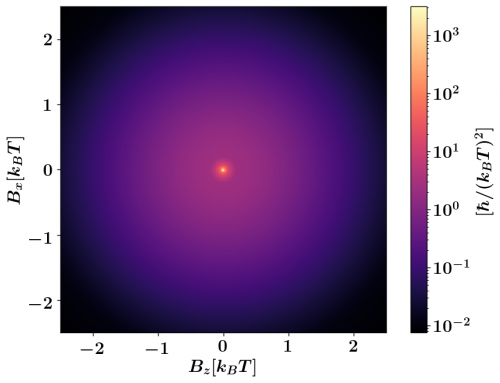TQM 2022
Topological Quantum Matter 2022
> Welcome to the "Geometric optimization of non-equilibrium adiabatic thermal machines" poster's page :)
You can download a digital copy here. The poster is based on the publication PRXQuantum.3.010326.
>> You're probably @BA. Here are some (not so touristy) recommendations
Parrilla/Asado: El boliche de Darío, El Ferroviario (usually hard to find place, call first!), Don Zoilo, El Desnivel
True tango: Here you can find a daily list of "milongas": hoy-milonga. If you want to hear a great local Tango player go to Cátulo Tango and listen to the Esteban Morgado Quartet.
Buenos Aires is the best place to read Borges. You can find very cheap books at the used books fairs near Plaza Italia and Parque Rivadavia
Ice cream? Probably Scannapieco is one of the best.
>>> A small optimization game
In Figure 3 you can see some lobe-like regions of big \(| \nabla_B \times \vec\Lambda(\vec B) |\). We easily see that a cycle enclosing one of these lobes will 'pump' a significant amount of heat (i.e. big \(A\)). Conversely, the value of \(\mathcal{L}^2\) for a given trajectory cannot be visualized so clearly since the dissipation is direction-dependent. However, a useful quantity to plot is the maximum eigenvalue of the symmetric tensor \(\underline \Lambda(\vec B)\). This value is an upper bound for the dissipation at each point of the parameter's space (and allows us to identify high-dissipative regions!). Below you can see a plot of the maximum eigenvalue of \(\underline \Lambda(\vec B)\):
